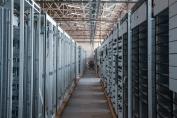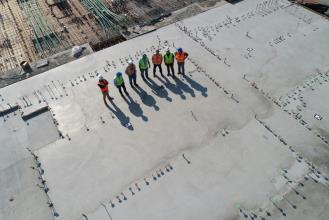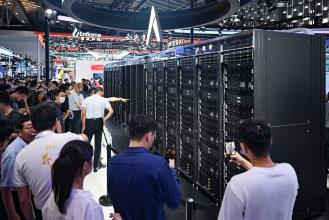Anthropic’s $50B U.S. Buildout: Texas & New York AI Data Centres
- 14 November, 2025 / by Fosbite
What’s happening: Anthropic announces major U.S. data centre expansion
Anthropic just unveiled a multi-site push across Texas and New York aimed squarely at training and serving large language models. Working with infrastructure partner Fluidstack, the plan channels roughly $50 billion into U.S. compute capacity for advanced generative AI infrastructure. These aren’t ordinary facilities — they’re built for high-density GPU clusters, with the power, cooling, and efficiency design decisions that come from years of wrestling with hardware at scale.
Why this matters for U.S. AI infrastructure
Quick read: this matters because supply and politics are converging. On one hand, enterprise demand for domestic, high-density compute is exploding. On the other, there’s a clear political push to keep strategic AI resources on U.S. soil. The 2025 conversation around an “AI Action Plan” and CHIPS-era incentives accelerated the calculus for many companies — Anthropic included — to lock in on-premise capacity instead of relying solely on cloud suppliers.
Key outcomes expected
- Jobs: Roughly 2,400 construction roles during the build and about 800 permanent positions once facilities are operational — a split that matters when local officials ask for economic-impact projections.
- Timeline: Sites are expected to come online in phases through 2026, with a phased Texas deployment likely mid-2026.
- Purpose-built hardware support: Facilities designed specifically for Anthropic’s GPUs, power-density needs, and dense rack cooling strategies.
Fluidstack partnership: speed and scale for GPU-heavy workloads
Fluidstack earned the nod because they move fast and can secure big power envelopes on short timelines — exactly what you need when you’re provisioning gigawatts for GPU clusters. I’ve watched similar rollouts: the difference-makers are how operators provision power, design cooling around dense racks, and coordinate with utilities. Fluidstack’s track record with clients like Meta and Midjourney shows they know the playbook; Anthropic’s selection signals they wanted a partner who could deliver at speed.
Industry context: competition, capacity, and the power grid
This expansion isn’t in a vacuum. OpenAI, big cloud providers, and hyperscalers are also expanding capacity — through cloud contracts, partnerships with Nvidia, or their own campuses. That raises a practical question: can regional grids support multiple gigawatts of new demand? Utilities, transmission owners, and regulators will all need to coordinate on new substations, transmission upgrades, and time-of-use strategies.
Case in point: a large Midwest campus built for high-density workloads reportedly cost $11 billion. Projects at that scale reshape local supply chains — transformers, switchgear, chillers — and require detailed scheduling with suppliers. In short, the supply chain and grid are the real gating factors, not just capital.
Policy and finance: public involvement and incentives
Companies are asking for help. OpenAI’s push to broaden CHIPS Act tax credits to include AI data centres and supporting grid equipment is evidence that firms expect public policy to lower the cost of infrastructure. The debate is ongoing: should CHIPS-style incentives subsidize data centre buildouts, or should support be limited to semiconductors and manufacturing? My read: we’ll see targeted incentives for grid upgrades and possibly tax credit pilots for companies that lock in community benefits.
Business outlook: growth, revenue, and efficiency
Anthropic’s growth story leans on talent and safety — and on Claude enterprise adoption. The product is in over 300,000 business accounts, and large enterprise contracts (>$100k/year) reportedly multiplied nearly sevenfold last year. Management’s internal math suggests a path to break-even by 2028, assuming the company can control training costs and scale Claude’s enterprise revenue.
Different firms go different routes: some lean on cloud fleet deals, others on vertically integrated campuses. Each approach has trade-offs in cost per token, time-to-train, and operational flexibility. To be blunt — there’s no one-size-fits-all answer yet.
Original insight: a hypothetical deployment scenario
Picture this: mid-2026, the Texas site enters service. During the day it handles inference for enterprise Claude customers; at night it flips to heavy training windows when grid prices drop. By coordinating workloads with time-of-use price signals and demand-shaping strategies, Anthropic could shave meaningful percentages off training costs. Industries like manufacturing do this all the time — run the heavy stuff at night — and AI operators will increasingly do the same as price signals and real-time markets mature.
What industry watchers should look for next
- Grid upgrades: approvals for new substations and transmission lines near campuses.
- Supply chain: lead times for transformers, switchgear, high-density chillers, and specialist installation crews.
- Policy moves: CHIPS Act implementation updates, state incentives, and any pilot programs tying infrastructure grants to local hiring.
- Competitive reactions: announcements from OpenAI, Microsoft, Google, Amazon, and other rivals about campuses or long-term cloud commitments.
- Environmental angle: how operators manage emissions, water use for cooling, and plans for on-site renewables or grid-sourced clean energy.
Quotes and perspectives
Dario Amodei, Anthropic’s CEO, framed the buildout as essential to “accelerate scientific discovery.” Fluidstack’s founder highlighted agility and the ability to deliver the power envelopes needed for high-density deployments. Those statements ring true — but the follow-through will be in the utility agreements and supply-chain milestones, not just the press release.
Further reading and references
If you want to dig deeper, these outlets and agencies are good starting points for tracking policy and market developments:
- Wall Street Journal — reporting on firm spending plans and internal projections.
- Bloomberg — coverage of CHIPS Act implications and finance angles.
- NVIDIA — perspective on GPUs and the hardware crunch shaping the market.
- U.S. Department of Energy — resources on grid modernization and energy policy.
Quick takeaways
- Scale: Anthropic’s $50B plan is one of the largest U.S.-focused AI infrastructure commitments to date.
- Domestic focus: The buildout aligns with federal and state efforts to shore up U.S. AI compute capacity.
- Challenges: Grid capacity, equipment supply, and financing remain central hurdles — and they’re harder to fix than they look on paper.
Bottom line: Anthropic’s Texas and New York projects are a major bet on domestic AI compute. Expect ongoing debate about CHIPS Act-style incentives, and watch utilities and supply chains closely — those are the real make-or-break pieces. In my experience, the winners in this phase will be the teams that combine technical rigor with pragmatic partnerships on power, cooling, and delivery timelines — and who can shift workloads smartly to exploit cheaper grid hours.











